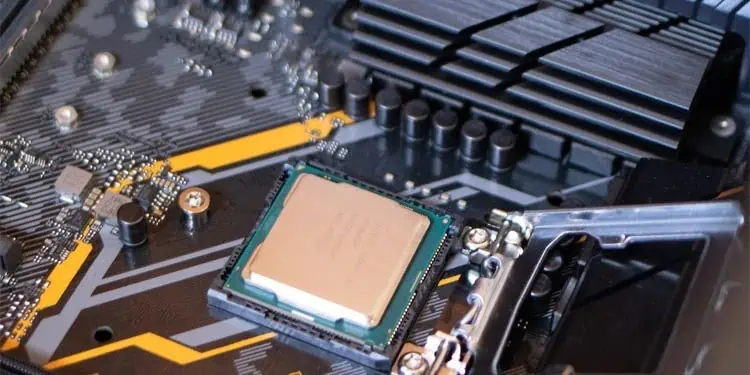Your computer needs to perform multiple functions before it loads up the Operating system. One such function is the Power on Self Test (POST) which tests the components attached to the computer and ensures that they are ready to be used by the system.
Although POST is a common process on many digital electronic devices, it is most often linked with computers. This test is crucial to detect the issues with the components and convey them to the users with error messages.

We will discuss this topic more, giving you a general idea of how POST works on your computer, why is it important, and how to solve the error detected during the POST.
What is Power on Self Test (POST)?
Power on self-test (POST) is a system diagnostic process that is carried out by the BIOS right after you power on the computer. The main function of this test is to see if the components connected to your computer are functioning well.
POST checks the hardware components installed on your computers such as the RAM, hard drive, processor, and others, and ensures these are functioning as intended. After the test is completed or if there are some issues detected, the system notifies the user with an error code using beep sounds,LED light flashes, or a hexadecimal POST code.
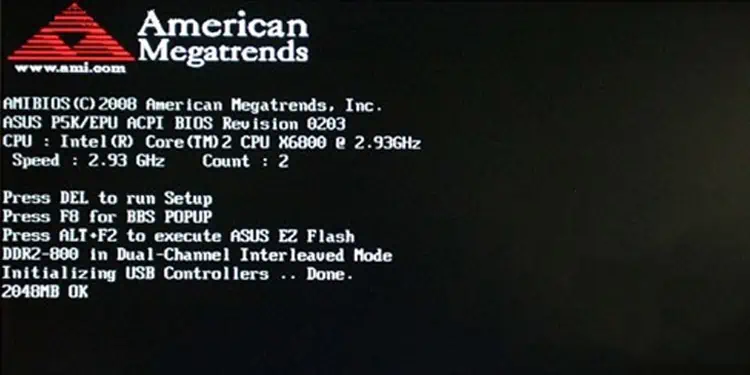
Once the POST is completed by the BIOS, it passes control to the bootstrap loader function on the system BIOS. Bootstrapping provides a set of instructions for the system to load the Operating system by checking the hard drives and other bootable devices.
How Does POST Work?
The POST process starts immediately after you turn on the computer by pressing the power button. When the Power button of the computer is pressed the electric current flows all the way through the circuits to different components including the ROM BIOS.
Note: This test starts only if the computer is cold-booted i.e if the computer is powered on after a shutdown. The system will skip the POST if the computer is restarted or warm-booted.

The CPU seeks the first phase of instructions that are required for the startup from the BIOS Chip. BIOS stores a set of guidelines on specific memory addresses to run the Power on Self Test. POST usually follows this sequence while conducting the tests.
Once these hardware components are checked and initialized, the POST heads toward the test of Nonsystem Hardware components. It initializes the configuration and nonsystem board components in this sequence:
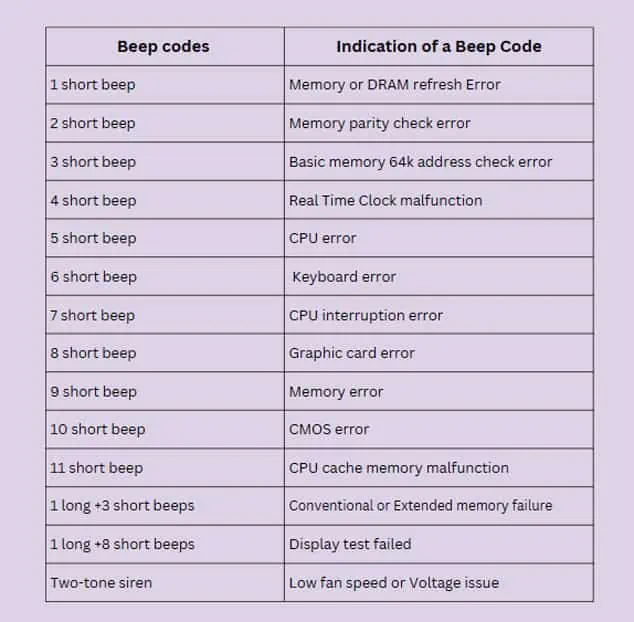
After the POST is complete, the start-up program is ordered to find the Master Boot Record (MBR). This is located in the first sector of your computer’s Hard drive (C drive for instance). The MBR then reads the boot-strap which locates the startup file of the Operating system. The control of the system is then handed over to Windows, Linux, or any other operating system you are using.
Signs that PC has Failed POST
If POST identifies some problem with the hardware components of your computer and fails the test, the system will not boot into the Operating System. It will then notify about the issues in the computer through beep sounds, text messages on the screen, LED light codes, or POST codes. If POST cannot display the error message using the Text codes on the screen, it will use the beep sound or the LED flashes.
Some system boards also give the error message only using a light code or a beep sound. These error codes are useful to diagnose the problem on your computer and fix them accordingly.
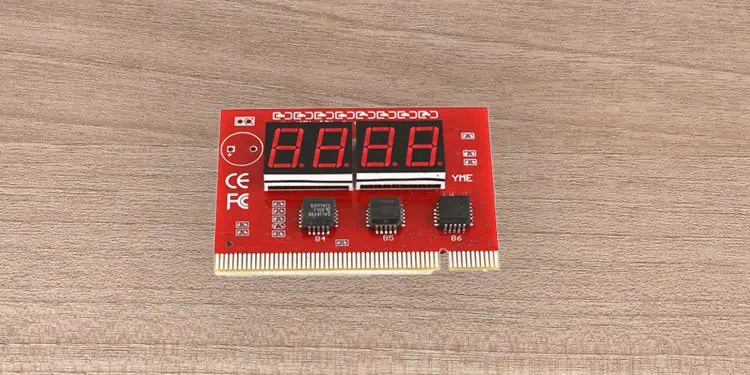
Beep Codes
On early computers, if POST detected any malfunctions with the components you would hear a series of beeping sounds. These are known as the beep codes. The computer basically communicates with the user with these beep codes before or during the video controller test. This is when the video is not available and text errors cannot be displayed on the screen.
Here is a list of beep codes with their meanings, that you may hear on computers with AMI BIOS.
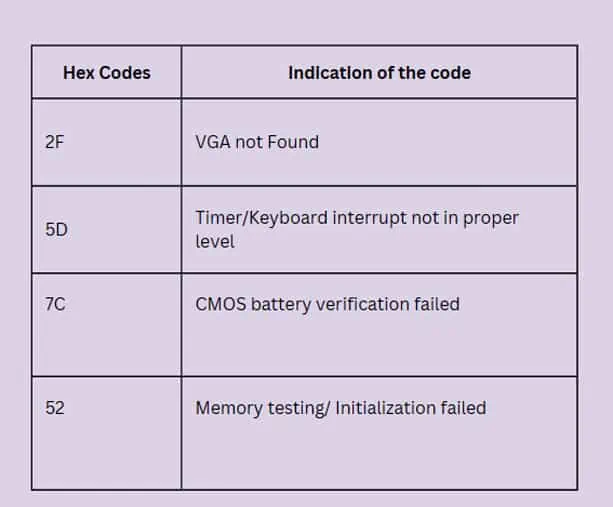
These beep codes along with their indications can differ from the motherboards. If you are experiencing such error codes, it is recommended that you consult your computer’s user manual to get to the specifics of the issue.
Text Errors
After the video test has succeeded and the display runs normally, the POST errors could be displayed as text on your display. These text errors give a direct report about the issue without using numeric codes or beeping sounds. For instance, if POST detects an issue with the keyboard, it will show a message like “Keyboard Failure” on the screen after the completion of the test.
Hex POST Errors
Sometimes, the text errors, Light codes, or beep codes can be misleading as well. These error notifications will not be generated if the POST process is interrupted and your computer goes on a boot loop. For a computer rendered dead, Hex codes provide a good reading of the existing issue.
However, to get the Hex POST codes, you need an interface card known as the POST card. Such POST cards fit into your computer’s expansion slot. When the BIOS carries out the POST, this card displays two characters of Hexadecimal code that indicate the bad hardware component.
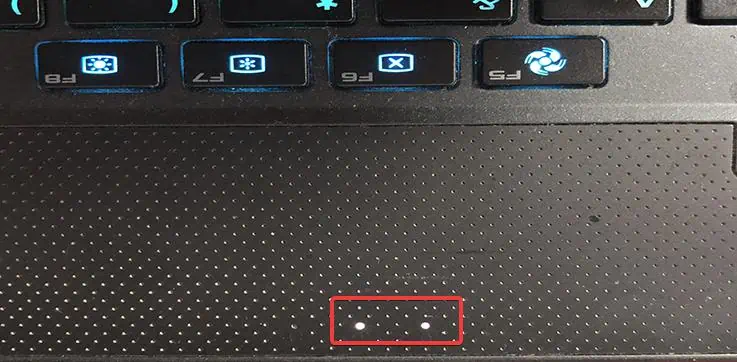
The Hex diagnostic codes and their meaning can differ from the cards you use. However, here are some of the common hex codes along with what they usually indicate.
Light Codes
On Laptops when the POST fails, the users can get notified by light flashes on the power button or front battery LEDs. These are known as light codes and they generally flash with some specific color combinations.
For instance, On dell laptops, the Failed post is indicated by apattern of amber/orangefollowed by white flashes. Each of these patterns conveys different issues pertaining to the RAM, CPU, BIOS, and others.

The light codes on the laptops could vary with the manufacturers and even models. To know the exact light codes for your laptop along with their implications, you must refer to your device’s user manual.
How to Resolve Errors Detected on POST?
Here’s a general way of resolving the POST error messages.
If you are one of those getting the beep codes and wondering how you may resolve them, here’s an in-depth article onBeep codes on ASUS Motherboardthat could help you.
